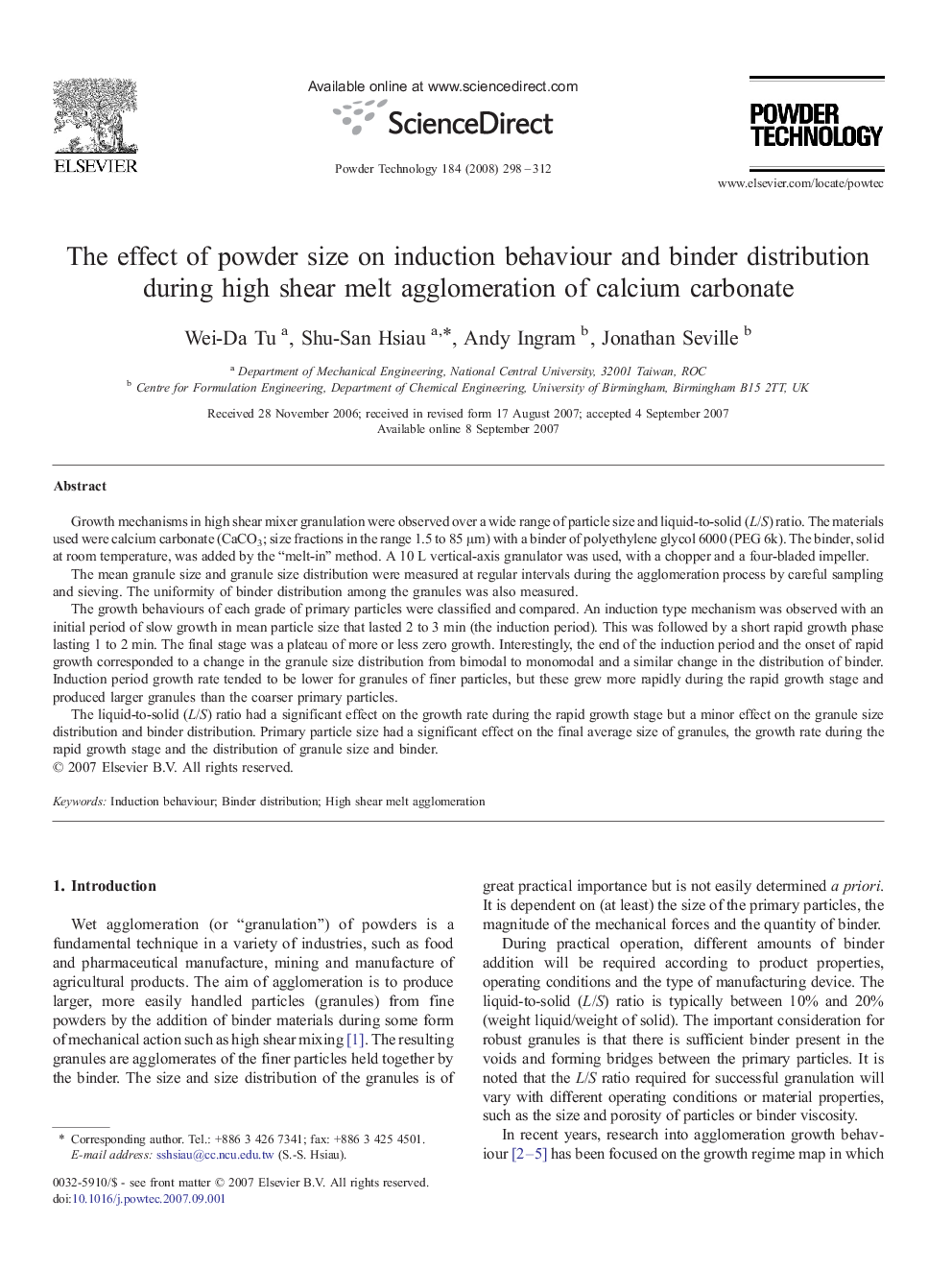| کد مقاله | کد نشریه | سال انتشار | مقاله انگلیسی | نسخه تمام متن |
|---|---|---|---|---|
| 238781 | 465773 | 2008 | 15 صفحه PDF | دانلود رایگان |

Growth mechanisms in high shear mixer granulation were observed over a wide range of particle size and liquid-to-solid (L/S) ratio. The materials used were calcium carbonate (CaCO3; size fractions in the range 1.5 to 85 μm) with a binder of polyethylene glycol 6000 (PEG 6k). The binder, solid at room temperature, was added by the “melt-in” method. A 10 L vertical-axis granulator was used, with a chopper and a four-bladed impeller.The mean granule size and granule size distribution were measured at regular intervals during the agglomeration process by careful sampling and sieving. The uniformity of binder distribution among the granules was also measured.The growth behaviours of each grade of primary particles were classified and compared. An induction type mechanism was observed with an initial period of slow growth in mean particle size that lasted 2 to 3 min (the induction period). This was followed by a short rapid growth phase lasting 1 to 2 min. The final stage was a plateau of more or less zero growth. Interestingly, the end of the induction period and the onset of rapid growth corresponded to a change in the granule size distribution from bimodal to monomodal and a similar change in the distribution of binder. Induction period growth rate tended to be lower for granules of finer particles, but these grew more rapidly during the rapid growth stage and produced larger granules than the coarser primary particles.The liquid-to-solid (L/S) ratio had a significant effect on the growth rate during the rapid growth stage but a minor effect on the granule size distribution and binder distribution. Primary particle size had a significant effect on the final average size of granules, the growth rate during the rapid growth stage and the distribution of granule size and binder.
The maximum rate of growth is plotted against primary particle size, in which the growth rate can be divided into three regimes as a function of primary particle size: fast growth, transition and slow growth. Furthermore, it suggests a descriptive method to determine boundaries between induction, steady growth and crumb behaviours.Figure optionsDownload as PowerPoint slide
Journal: Powder Technology - Volume 184, Issue 3, 2 June 2008, Pages 298–312